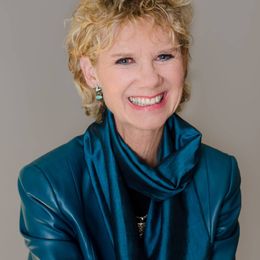Social Media Tips for Midlife Entrepreneurs
Using Facebook, Twitter, Instagram, LinkedIn and YouTube to grow a business
Ginny Corbett, 56, founder of Salúd Juicery, in Sewickley, Pa, has worked hard to build an Instagram following to connect with customers. She now has over 9,413 followers. And it’s free. Sort of.

“If you count your time as money, I have spent thousands of hours,” Corbett says. “I have also used professional photographers to get a good library of posts for our specials, and it can cost $300 to $700 per month for a social media assistant.”

For midlife entrepreneurs like Corbett, who I profiled in my book, Never Too Old to Get Rich: The Entrepreneur’s Guide to Starting a Business Mid-life, traditional advertising and marketing methods can be out of reach financially. But social media platforms such as Instagram, Facebook, LinkedIn, Twitter and YouTube can boost your business by getting the word out virtually for little or no money.
Free Services That Social Media Offers Entrepreneurs
You can, for example, create a Facebook, Instagram, LinkedIn or Twitter page for your business without charge and post content as you please. It might be an expert blog post or a link to your website or Amazon book page (if you're an author). You can also jump to the next level and create a paid advertising campaign.
“Insta is rather addictive,” Corbett says. “It is a bit like a slot machine when your phone starts dinging up a storm after a good post as people like it.”
When you create an ad on Facebook or Instagram (owned by Facebook), for example, you start with creating your objective — such as growing the number of people visiting your site or encouraging people to follow your page. Then, you can then slice and dice who is going to see your ad.
“Insta is rather addictive,” Corbett says. “It is a bit like a slot machine when your phone starts dinging up a storm after a good post as people like it.”
You can choose your target audience by age, gender, interests and location, among other variables. You set your ad budget — a total amount you want to spend daily —and can edit it at any time.
When Your Ads Will Appear on Social Media
The social media sites estimate the number of people you can reach each day and your selected audience. The ads in your campaign stop running once they've reached your spending limit or the date you set to end it. You can determine how often the ads appear, say, once a day, week or continuously.
LinkedIn works in a similar social marketing fashion. You begin by create a business page. “The first 2-4 weeks on a new platform are an investment in testing and learning,” according to LinkedIn’s tutorial. “We recommend testing with at least $100/day or $5,000 total (generally in a month).”
That seems expensive to me. As an author and speaker, I have mostly only dipped in with Facebook and Twitter ads and free posts, plugging my books or speaking services. I’ve never spent more than $100 on any platform campaign in the last five years. But I have seen book sales bump up and have had calls for speaking engagements that I attribute to that marketing avenue.
It’s fun from an analytic standpoint since the sites let you track through your dashboard how many times your ads have been seen and actions that have been taken.
On Twitter, for instance, you can dig down to audience insights such as: they’re interested in dogs, like to buy online, have a household income between $75,000 and $100,000, are married, own a home and so on. And you can respond to comments, allowing you to engage with potential customers.
2 Caveats When Using Social Media for Your Business
Two caveats:
The first is that virtual marketing can require a thick skin. Behind the computer screen, reviewers can lack a filter of kindness at times or may simply be out to cause trouble.
The second is that what’s working for you today might not tomorrow.
Says Corbett: “When I launched my business, I worked very hard on Facebook and had a good following. Then they changed the rules, and it was really inconsistent as to how many followers would be exposed to a post we would put up.”
Advice From a Social Media Strategist

To learn more about how a small business owner can best use social media, I reached out to Miriam Salpeter, a social media strategist and owner of Keppie Consulting. Here are highlights from our conversation:
Kerry Hannon: Why is tapping social media a great strategy for entrepreneurs?
Miriam Salpeter: If you are a legitimate business, people expect you to have a presence online. It helps demonstrate credibility. Someone may be more likely to buy from you if they see you have a presence and followers online. More importantly, they may be interested in if you respond to customer inquiries. Social media provides a platform to speak directly to people.
Another important reason to use social media is because it allows you to help determine what people will find when they Google your name or your business name. You can tap into this aspect of social media’s benefits by simply posting content regularly on the networks you choose and making sure to tag it so Google indexes it.
Any additional benefits of using social media?
Brand awareness; being discovered by new people. You can establish yourself as a thought leader by publishing consistent information relevant to your industry. Social media also allows you to stay top-of-mind for those who may purchase from you or refer others to you. You can generate leads without having to do more than share useful and relevant content online.
On a social media platform, you create a two-way conversation with your audience, which can inspire them to become brand advocates for you.
And you can manage your reputation by encouraging people to post online reviews, which continue to have a strong influence on purchasing decisions. And it lets you keep an eye on what people are saying about your business.
Which types of social media platforms are best when you're launching a business and which are better once you are up and running and why?
There is no hard and fast rule about what networks to use. Business owners need to identify their target audiences.
For example, if your business targets teenagers, you may want to investigate using TikTok [a video sharing network] or Instagram to reach them. On the other hand, if your product or service is more suitable to an older audience, such as the parents of teens, Facebook may be a better use of your time.
YouTube, and video in general, continues to be an important avenue for reaching customers and clients. If your business lends itself to ‘how to’ videos or you can be creative in demonstrating your product via video, this mechanism could be perfect for you.
If your product or service is particularly visual in nature, Instagram is probably your go-to network. LinkedIn maintains its place as the business network, so it is an especially important network for anyone targeting a business audience.
Should entrepreneurs create paid campaigns by buying ads or hiring someone to manage their use of social media?
In many cases, businesses will want to create a paid campaign to help extend their reach. However, it is a good idea to establish yourself on the network prior to creating paid ads in many cases.
It is also important to have a strategy and a reason for a paid campaign.
For example, Facebook advertising is relatively inexpensive, but it may not be worthwhile paying money to encourage people to simply ‘like’ your Facebook page. Instead, you would want to consider ads that will help you directly sell a product or service or create a system to collect email addresses of people targeted in your ad.
One strategy that continues to be popular is to leverage influencer marketing. This involves contracting with someone you believe is influential with your target audience to help promote your product or service.
Maybe you are picturing a big celebrity, with a big price tag, as an influencer. However, ‘micro-influencers’ have become popular targets for campaigns. For example, if you are marketing a local event to parents of small children, you may want to connect with individuals who have an audience you want to reach. That may mean winning over the director of the largest preschool in town.
How do you measure if your social media plan is successful?
Clicks, likes, comments, reach, impressions, engagements, actual sales — all of these can be measured on social media.
The most important aspect of a successful campaign is having a goal in mind and creating a campaign for that goal. If your goal is actual sales, you can measure based on number of sales. If your goal is for more people to be aware of your organization or to provide contact information, you can measure success based on those results.
(This article is part of America’s Entrepreneurs, a Next Avenue initiative made possible by the Richard M. Schulze Family Foundation and EIX, the Entrepreneur and Innovation Exchange.)


